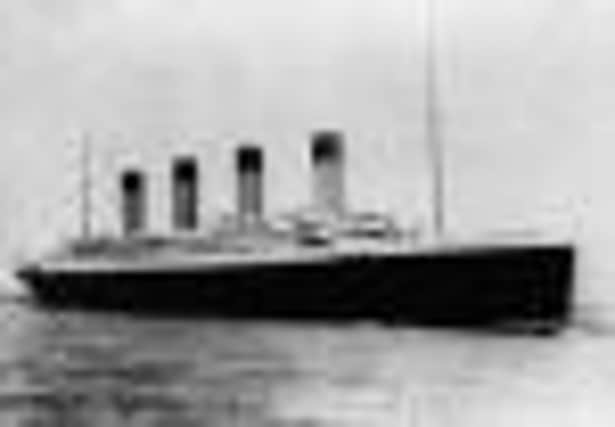‘My great-grandfather didn’t sink the Titanic’


But yesterday Robert Hichens’ great granddaughter, who has spent years battling to restore the reputation of the ill-fated liner’s helmsman, made an emotional visit to his newly discovered grave in an Aberdeen cemetery.
Sally Nilsson, the author of a recent book on the Titanic quartermaster who “died of a broken heart”, fought back her tears as she laid a simple wooden cross and a bouquet of flowers at the unmarked sailors’ grave in the city’s Trinity Cemetery where Mr Hichens was buried in 1940 following his death at the age of 58.
Advertisement
Hide AdAdvertisement
Hide AdAs she stood at the graveside where another two merchant seamen also lie buried, Ms Nilsson said: “It’s been along journey. But being here means everything. Robert never had a voice – he couldn’t speak. And I suppose I’m the only one who can speak for him. I just hope I have done my best for him.”
One hundred years ago Robert Hichens made history when he was the man at the wheel of the Titanic when the White Star luxury liner struck an iceberg on her maiden voyage. As the liner began to sink in the icy waters, Mr Hichens was put in charge of one of the first lifeboats, carrying survivors of the disaster, to be launched. At the inquiry into the tragedy Hichens was accused of swearing at passengers, “drinking all the whisky” and refusing to return to the scene of the sinking to pick up survivors. Denver millionairess, Molly Brown, who had been one of the lifeboat’s passengers, threatened to throw him overboard and later branded him a coward.
Ms Nilsson, 47, said her great grandfather had never recovered from the stain on his character. Regarded as a “Jonah” in the merchant fleet, he struggled to find work, took to drink and was jailed for attempted murder.
Released from prison in 1937, Hichens returned to sea and died of heart failure on 23 September, 1940, aboard the cargo ship English Trader which had been anchored off Aberdeen after the ship had completed a hazardous voyage across the North Atlantic in a wartime convoy.
Ms Nilsson, who has written a book The Man who Sank the Titanic, in a bid to restore her great grandfather’s reputation, said: “This is the conclusion of an intense and emotional journey. He died of broken heart. He had gone through so much in his life. But I believe I know him and I grew to love him.”
Robert, she said, had been unfairly portrayed as a coward. He had been one of the few survivors of the disaster who knew exactly what happened in the crucial 45 minutes from the time the Titanic hit the iceberg and the first of the lifeboats being lowered into the water. In that 45 minutes is the mystery and the secret and everything we will never known about what went on there,” she said.
“But what I do know is that Robert witnessed it all. Did he and the lookouts tell the true story? No I don’t think they did.
“I think the White Star line had their stories sanitised and they were drilled about what to say.
Advertisement
Hide AdAdvertisement
Hide Ad“The White Star silenced them with offers of a good job with pay for as long as they could work. But Robert was seen as an embarrassment.”
She insisted he had been no coward. He could not approach the wreck because of the danger of the lifeboat being sucked down with the Titanic.
She only discovered earlier this month that he had been buried in Trinity Cemetery after contacting Ian Burnett, the council’s cemeteries officer.